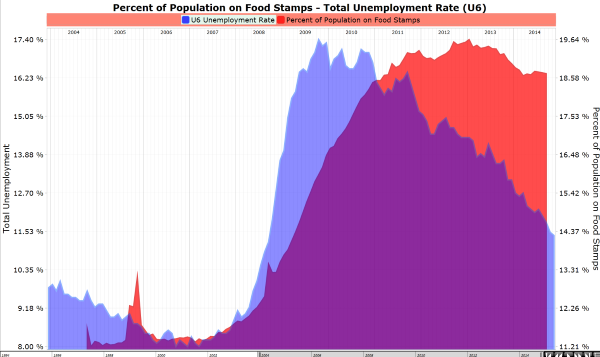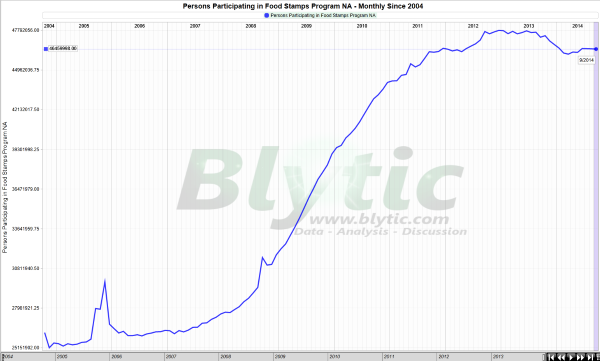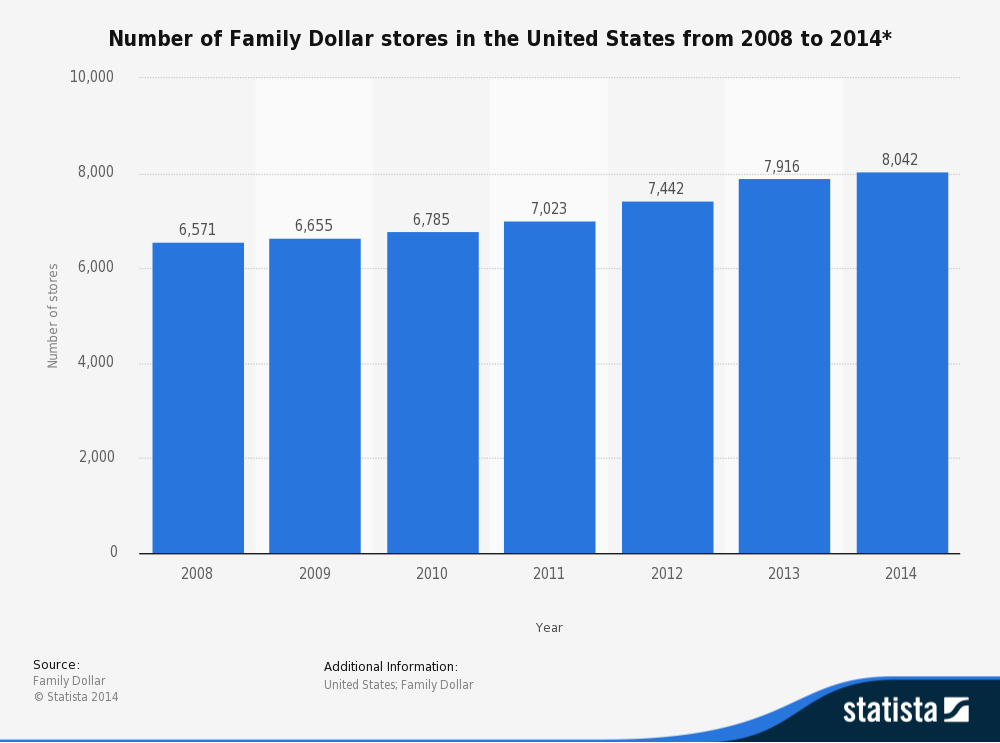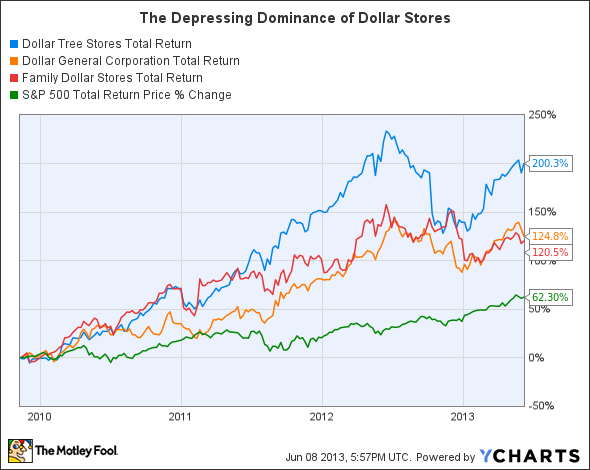January 20, 2015
Food stamp usage surges when the economy enters into a recession. That is no surprise. In fact, this is the design of the program. A safety net when things get bad. But if we are to believe headline indicators, the economy is improving so we should see food stamp usage decline substantially. It has not. Thanks to the low wage recovery, you have a new class of working poor. We still have an incredibly high number of Americans on food stamps as we start 2015. Dollar stores have done a great job capitalizing on this army of people needing low cost items to buy. Instead of selling trivial junk, many dollar stores now make most of their volume through food sales. Working and being on food stamps doesn’t seem like a perfect combination but it is if you are one of the millions in thelow wage economy. As we will highlight in this article, we are finding a high number of Americans unable to dig themselves out of the hole set from the Great Recession.
The permanently high number of Americans on food stamps
It is typical to have food stamp usage fall when the unemployment rate declines. The stock market is near a peak so you would expect that this would be trickling down throughout the economy. It is not. Food stamp usage is remaining stubbornly high.
Take a look at this chart:
Unemployment went up and so did food stamp usage. No surprise. But as the unemployment rate fell, the percentage of Americans on food stamps has remained very high. There is a big gap going on here. We still have 46 million Americans on food stamps:
The program actually faced cuts recently which doesn’t make much sense since most people on food stamps are truly poor. We also have many that are working but still don’t make enough to cover basic necessities like food. Some states have nearly half of their adults not working. What you have unfolding is some structural damage to the underlying workforce.
The rise of dollar stores
It should then be no surprise that we have a large growth in dollar stores across the country. Take a look at the growth of Family Dollar stores in the US:
More than 8,000 Family Dollar stores are now in the US. This is a healthy increase from 6,500 back in 2008. It is also no surprise that dollar stores have done exceptionally well on the stock market:
When you have 46+ million Americans on food stamps in what is supposed to be a solid economic recovery, you have to really ask what is happening to the underlying workforce. You also haveone-third of working Americans supporting the other two-thirds. These kind of numbers are simply not conducive to sustaining a solid middle class.
It is no surprise then that the first major initiatives coming out in 2015 are dealing with the middle class. 2016 should be a year focused on middle class challenges. Yet how do you confront these challenges? The goods sold at these stores are at low costs because labor costs are kept low. Many of the products are brought in from lower cost countries. Do you raise costs and pass them off to people that can’t clearly afford it? You can see the conundrum here.
There are no easy answers here but you can be sure that business at dollar stores will remain consistent for years to come.







